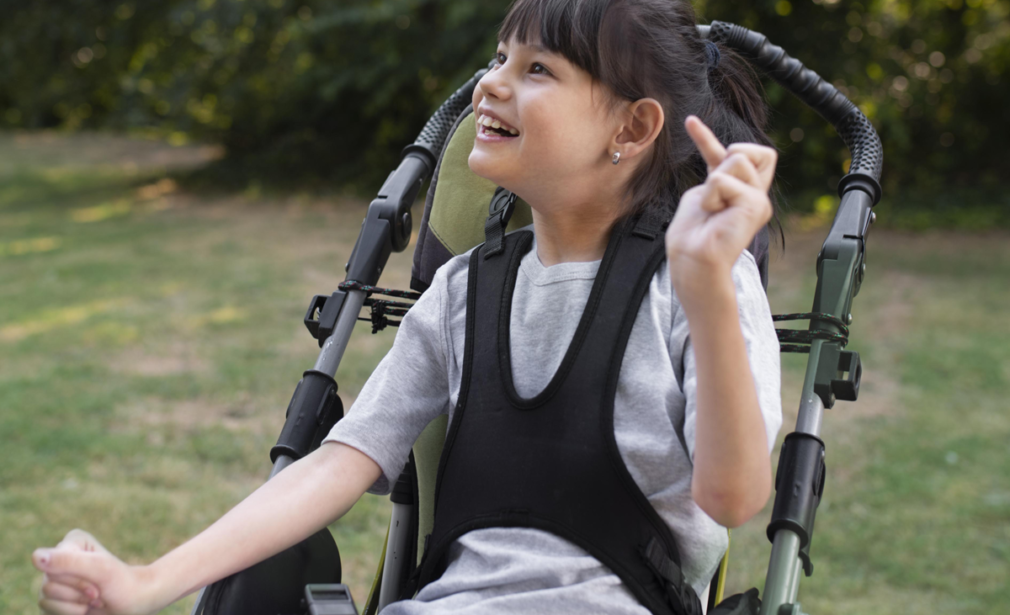What it means?
Cerebral palsy means a group of condition in which the parts of the brain which control muscular activities get damaged. As a result of that movement and coordination will get affected.
What causes it?
Any injury to the brain tissues at or around the time of birth results in loss muscular control. This in turn leads to delay in achieving developmental milestones like sitting, standing and walking. The muscles in the limbs will become tight and keep the joints flexed. Initially this can be overcome by simple and gentle stretching exercise. If left untreated this will progress to joint contractures and even joint dislocations which will further compromise the child functionality.
How child will present like?
- Baby achieve their milestones like neck holding, sitting, standing or attempt to walk later than the normal baby or elder sibling – Developmental delay
- Babies will keep the limbs tight and it may be difficult to make it straight with simple force
- Some babies can develop seizures
- Associated vision or hearing difficulties
- Child can have difficulty in swallowing, drooling of saliva, dental problems, constipation
- Older child can develop curved spine due to the abnormal sitting posture and muscle imbalance
- Child can also develop joint contractures, hip subluxation or dislocation that means hip joint slips out of the cavity
What are the tests required?
- If the baby learns to roll over, sit up, crawl or walk late could be the early sign of cerebral palsy
- Usually, baby pull to sit without support by oneself between 6 to 8 months of age and walking without support between 14 to 18 months. If the baby is slow to do these things need to be evaluated by your pediatrician, Pediatric Neurologist and Pediatric Orthopaedic surgeon
- Watching walking patten of the child is an important part of evaluation and also watching the ability of the child to sit, crawl and usage of their hands also very important part of the assessment
- Child limbs will be assessed clinically for the amount of tightness in the muscles, range of movements of the joints, and the power of the muscles, any associated deformity of the limb
- X-ray of the affected limb, both the hip joints and spine will be required in order to assess the severity of deformity, any joint subluxation or dislocations
- MRI of the brain to look for any abnormalities
What are the treatment options?
- The treatment varies depends upon the age of the child, severity of the condition
- Babies less than 3 years of age with cerebral palsy, the main aim of the treatment is to help them in achieving their milestones through physiotherapy, occupational therapy, speech therapy
- In older children, the main aim of the treatment is to keep the joints functional and improve their ability to do things independently. This can be achieved with physiotherapy and occupational therapy
- Physiotherapy helps to stretch these tight muscles and keep the joints supple in order to prevent development of joint contractures, joint dislocations. Also helps to strengthen the muscle and facilitate the child to achieve the milestones
- Braces also play an important role in the treatment. Braces can help to maintain the stretched-out muscles, help the child to keep the feet flat on the ground
- Medications can help to reduce the spasticity that means tightness of the muscle which in turn helps to do better physiotherapy and achieve good joint range of movements
- Onabotulinum Toxin A can be used in some children who have only tightness not yet developed any contractures of the affected joint which relaxes the muscles and facilitate full movement of the joints
- Surgical treatment varies according to the age and severity of involvement. Younger child will require mainly soft tissue procedures in the form of tendon lengthening, moving tendons from one muscle to another. Older children may require bony procedure in the form of cutting and realign the bone
- Other treatment options like placing a pump which delivers baclofen into the fluid around the spine which help to relax the muscles, cutting the selective nerves in the lower spinal cord known as dorsal rhizotomy also helps to relax the tight muscles
What will be outcome?
- Every child with cerebral palsy is unique need to be assessed and treated accordingly
- The outcome depends upon the type, severity of initial brain involvement
- Child able to walk by the age of 4years will be independent walker
- When the child enters teenage the bones grow faster than the muscles which results in more tightness in the muscles and may worsen the function thus it requires more effort and regular follow up to detect at the earliest and treated accordingly

